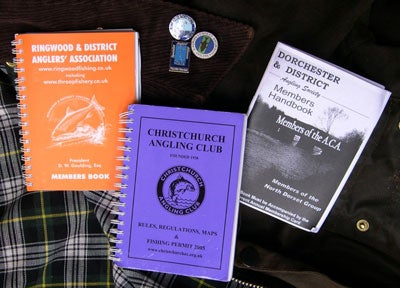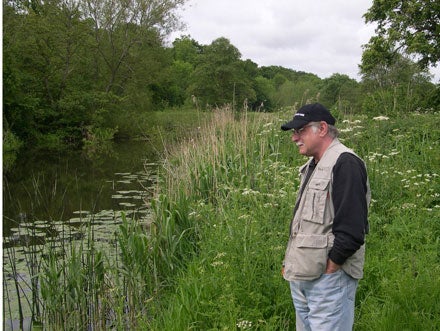| MARK WINTLE |
| Mark Wintle, an angler for thirty-five years, is on a quest to discover and bring to you the magic of fishing. Previously heavily involved with match fishing he now fishes for the sheer fun of it. With an open and enquiring mind, each week Mark will bring to you articles on fishing different rivers, different methods and what makes rivers, and occasionally stillwaters, tick. Add to this a mixed bag of articles on catching big fish; tackle design, angling politics and a few surprises. Are you stuck in a rut fishing the same swim every week? Do you dare to try something different and see a whole new world of angling open up? Yes? Then read Mark Wintle’s regular column. |
| THE PRICE OF FISH(ING) What’s it worth then? Your coarse fishing that is. How much are you prepared to pay for your fishing in day tickets, club memberships or syndicate fees? £ 10 a year? £ 100 a year? £ 1000 a year? Nowt? Do you get what you pay for? Or are greedy fishery owners sometimes taking us for a ride? On a season basis Down here in sunny Dorset, I could fish several bits of river for free; that would give me four miles on three rivers, and some reasonable fishing. I’d have to put up with the crowds, the kids, and the litter, but it’s not a bad bargain. Then again, I could join one of the small local angling clubs; cost from £ 25 to £ 45 per year. This would give me much more river fishing and a sprinkling of decent stillwaters too. More seclusion, a bit of peace and quiet, more variety, and no shortage of fishing, all for less than a pound a week, can’t be bad eh?
Digging deeper in my pockets, there are the big clubs at over a £ 100 a season like Christchurch AC or Ringwood DAA. Far more water, prestigious fisheries like the Royalty and Throop, a variety of stillwaters, lots of river waters, and even some game fishing if I please. True, some waters are very popular but there are plenty of quieter stretches. They can’t be doing that much wrong in that the demand for membership continues on the up. Finally, at the top there are the exclusive clubs and syndicates, if they’ll have me. Waiting lists aside, these can cost from £ 100 upwards to several hundred pounds and might only cover a single lake or stretch of river. By the day Then there are the day ticket waters; a farm pond or obscure bit of the Stour might ask for £ 5, the commercial waters for slightly more, and the best waters at £ 8 to £ 10. So far, it has all been reasonable, and mostly affordable. Then it gets more complex In recent years, there has been a growing trend to change the simple nature of a day ticket into something more complex. Now, I’m a simple float angler. I can manage one rod, just; no more. Personally, I fish more effectively with one rod. Sure, I’ve tried two rods but for me effectiveness goes out the window. But that is not to say that others shouldn’t fish with more than one rod, provided it isn’t harmful to the fish, or causes other anglers a nuisance. And this often means that to fish with one rod means one price but add a second (or third) rod and the price of the ticket rises accordingly. I have seen it as £ 5 per rod, so three rods cost £ 15, or £ 10 for one rod and £ 5 per extra rod, which seems steep to me, or a crafty way to extract more money. Time bandits? But who is the bandit? As I spend my fishing time concentrating on a float, my fishing sessions tend to be short, say up to about five hours, rarely more. Apart from restrictions on fishing outside of daylight, the fact that I mostly fish on club water means that this doesn’t matter too much. In day ticket land, those that prefer to fish much longer sessions using bite alarms are commonly finding a very different scenario. Wanting to fish from Friday night through to Sunday afternoon, they find the days and nights divided into shifts. Add the two factors of a per rod price plus the days divided thus and it is not unknown to find a bill of £ 70 for the weekend. What is more, there are anglers prepared to pay it. From Day Ticket to Syndication But running a water this way takes almost constant policing compared to the comparatively come as you please club water. With a high overhead to ensure all the fees are monitored and collected, more than one owner has reckoned that for far less hassle going the syndicate route is the answer. Sway Lakes is the most recent example of this. Those that fished every weekend on the per rod, per shift basis are better off, but the casual visitor is forever excluded. What I wonder is whether such an arrangement is sustainable beyond the first couple of years on such small waters. I believe, rightly or wrongly, that the first year many of the regulars are so conditioned to fishing only one water that regardless of cost there is a mad scramble for syndicate places. But in subsequent years, you may find that at least some will weigh up how many times they were able to fish the water, find the actual total much less than intended and relinquish their place. Unless such a fishery is so fantastic or that there is a long waiting list, it may be that after a couple of years the owner cannot fill the places. Something Special? Syndication on small scale has been around for decades, especially when there is the combination of a water that is very special (as in beautiful surroundings) plus really big fish. In the past, it was waters like Redmire. Nowadays, it is more likely that waters holding exceptional barbel are turned from club water to limited syndicates. Waters holding other species are not immune though. Sometimes it is more a case that the fishery owner would prefer the same income from a relatively small group of anglers, all known to him, to the hazards of an increasingly popular club water. What’s it worth anyway? I have a fair idea how many trips I make each year, how much my club memberships cost, and on whose waters I fish. Each season I weigh up whether it is worth continuing membership of each club. If I find that whereas previously I was fishing a club’s waters a lot but this has now fallen away to hardly any trips then I consider giving that membership up, unless I think that I will be using those waters much more the following season. Sometimes, this exercise makes me consider balancing my use of the available water more.
What I have found is that I go fishing enough to make my average daily fee only about £ 3, this varying from club to club from £ 2 to £ 7, day tickets costs also within this bracket. Discussing this with Peter Jacobs, he had found that, with his work patterns curtailing when he can fish, some of the fishing that he was paying substantial fees for was hardly used. Peter’s daily cost of coarse fishing fees had, in some instances, soared to £ 40 to £ 50. For him, it is time for a rethink. As an aside, some of the game fishing near Peter’s home typically charges £ 110 per day for trout flyfishing on one of the Avon tributaries, so perhaps we coarse anglers should count our blessings. The costs I have quoted are based on those local to me. I know that in many parts of the country the price of day tickets, especially on rivers is less, and so are many club books. Conversely, those near to London are often substantially more. It follows that this is a demonstration of the economics of supply and demand. If something is highly sought after, ie, barbel fishing in beautiful surroundings and it is near a high demand area then the price is likely to be high. Conclusions I have written purely from the point of view of the angler. As coarse anglers, we get our fishing at very reasonable prices for the most part, and by and large, you get what you pay for. What do you think? Do we get good value for our fees? |












